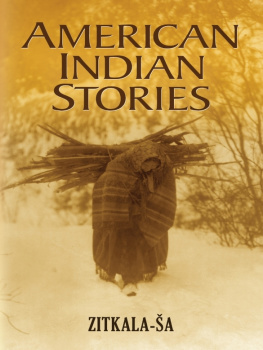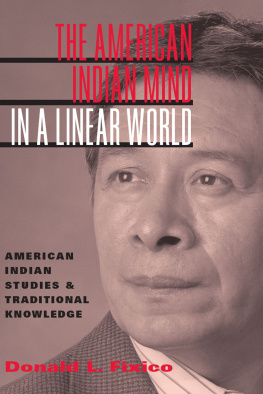
Chauncey Yellow Robe
A Biography of the American Indian Educator, ca. 18701930
DAVID W. MESSER
Foreword by RONA YELLOW ROBE

McFarland & Company, Inc., Publishers
Jefferson, North Carolina
LIBRARY OF CONGRESS CATALOGUING DATA ARE AVAILABLE
BRITISH LIBRARY CATALOGUING DATA ARE AVAILABLE
e-ISBN: 978-1-4766-3304-6
2018 David W. Messer. All rights reserved
No part of this book may be reproduced or transmitted in any form or by any means, electronic or mechanical, including photocopying or recording, or by any information storage and retrieval system, without permission in writing from the publisher.
Front cover image of Chauncey Yellow Robe, Rapid City, South Dakota, on May 22, 1906 (courtesy of Minnilusa Historical Association, Rapid City)
McFarland & Company, Inc., Publishers
Box 611, Jefferson, North Carolina 28640
www.mcfarlandpub.com
Foreword
by Rona Yellow Robe
My name is Rona Yellow Robe. A Cree woman with African American blood, adopted by my father, Joseph Yellow Robe, who is Assinaboine and Gros Ventre from Fort Peck, Montana. However, my dad was born and raised in Havre, Montana, and resides there still. Due to the politics of enrollment in Fort Peck, my brothers and sisters and I are enrolled members of the Chippewa-Cree Tribe of Rocky Boy, Montana, under the bloodline of our mother. Our mother was Lucille Chapican-Yellow Robe, who was of the Cree Nation. She was a full-blooded Cree from Saskatchewan, Canada, who was enrolled at and lived much of her childhood on the Piapot Reserve. Because of treaties, my mother, along with many of our Canadian family, was allowed to be enrolled in both the States and Canada. Our mother passed away in January 2005. She was 63 years old.
Two years ago, I was asked to participate in Canadas Truth and Reconciliation Commission, which sheds light on the Indian mission schools and brings healing to its survivors. As children, these survivors were taken by law from their homes and forced to be educated and raised by those who did not have a clue about how to raise aboriginal children. Our mother was one of these children.
A few years before my mom passed, she and I took a road trip to her Piapot Reserve. She showed me the humble means of her childhood home, and filled me with the stories of her time there. We traveled to the Lebret mission school in Fort QuAppelle where she was sent to be educated. She told of how she was taught to speak French and English. She went on to share how she and my aunties and her cousins would run away from the school only to be caught and then severely punished. Mom told me about the humiliation of getting her hair chopped off, and how she was not allowed to speak Cree. If she did, she endured punishment as a result. As I am my mothers daughter, I can attest to being affected by her experiences long before I knew the words intergenerational trauma.
I was flattered to be asked to write the foreword. But then, the deeper I read this book, the more I began to feel resistance to writing this piece. I sat in the comfort of my home, overlooking the beauty of the swaying trees and drinking my cup of coffee, a woman educated through the American school system, and it seemed to me that it may be easy to judge Chauncey as a sellout, an apple. Apple is cruel word I heard as a young girl, used to describe an Indian who was red on the outside and white on the inside. We may think we would have been more like Montezuma, who appeared to stand strong for the culture of the indigenous people. However, as my father said, It is important to introduce the state of the nation Chauncey lived in, and having not lived in that time, choices were much more stark. David W. Messer does well in addressing the state of the nation.
According to Davids research, it is important to consider that Chauncey was a child of the Lakota people. His life was celebrated in the ceremonial ways of the Lakota Sioux. As a young boy, against his wishes, he was made to go to Carlisle Indian Institute. He was received favorably under the eye of the founder of the school, General Pratt. Like all young boys who desire a father-son relationship, a father to look up to, General Pratt became that father figure to Chauncey.
Chauncey was considered a success according to the idea of Kill the Indian but not the man. Nevertheless, it looks to me that Chauncey survived his experience of assimilation. A child learns and picks up what is happening around him. To communicate, a child learns to speak the language. To receive love and affection, a child obeys.
Though Chauncey became an advocate for assimilating the Indian into civilization, I could see from this biography where he used his prestige in his later years for the betterment of his people and to protect the Indian culture and traditions. Some people may not be able to see Chaunceys goodness. It is one thing to be betrayed by a government, but when it appears that one is attempting to kill the sovereignty of ones own people, it is a crime beyond treason. However, I dont believe thats what happened with Chauncey Yellow Robe. I do see a spirit who took a tough situation and made it work for him and his family.
The older I become, the more I no longer live in the limited and strict world of right or wrong, good or bad, black or white. The famous quote Dont judge a man until you walked two moons in his moccasins is necessary for us to consider as we read this biography of Chauncey Yellow Robe. Im sure, in Chaunceys own reflection upon his life, like many of us, he considered what he might have done differently. I do believe he did the best he could. Maya Angelou wisely said, Do the best you can until you know better. Then when you know better, do better. This was demonstrated by Chauncey.
I experienced many emotions as I read about Chaunceys life. I self-righteously judged, and as I read further and was given direction from my father and best friend to look beyond my own experience in life, I compassionately forgave. Tears filled my eyes and then I would find myself laughing out loud.
Davids biography is an informative and intriguing read. I am very appreciative of the research and historical information that I did not know. For example, I knew the history of Wounded Knee, but I never knew the details of the first gunfire. My father wisely told me: Rona, you dont have to agree with everything, but its important to understand the distance Chauncey came from those conditions. The fact that the American Indian has survived is a testament to the strength weve had to endure to make it.
I am Rona Yellow Robe. A Cree woman with African American blood, adopted Assinaboine Sioux and Gros Ventre. I do not speak my mothers or my fathers language, and I only know one Cree song, which I hold very close. I have taught myself how to jingle dress dance. Ive taught myself how to play the Native American flute, both traditional and contemporary style. Ive never lived on my reservation in Rocky Boy, Montana, and I am educated in the schools of white America.
Some would look at my life say that I am a successful urban Indian woman. If those who worked to assimilate the indigenous people into the culture of white America were to look at my life, they would probably feel they succeeded. However, right at the surface of my being there is a longing, a yearning to receive back that which was taken from me long before I was born. It makes me wonder if Chauncey Yellow Robe felt the same way.
Next page







